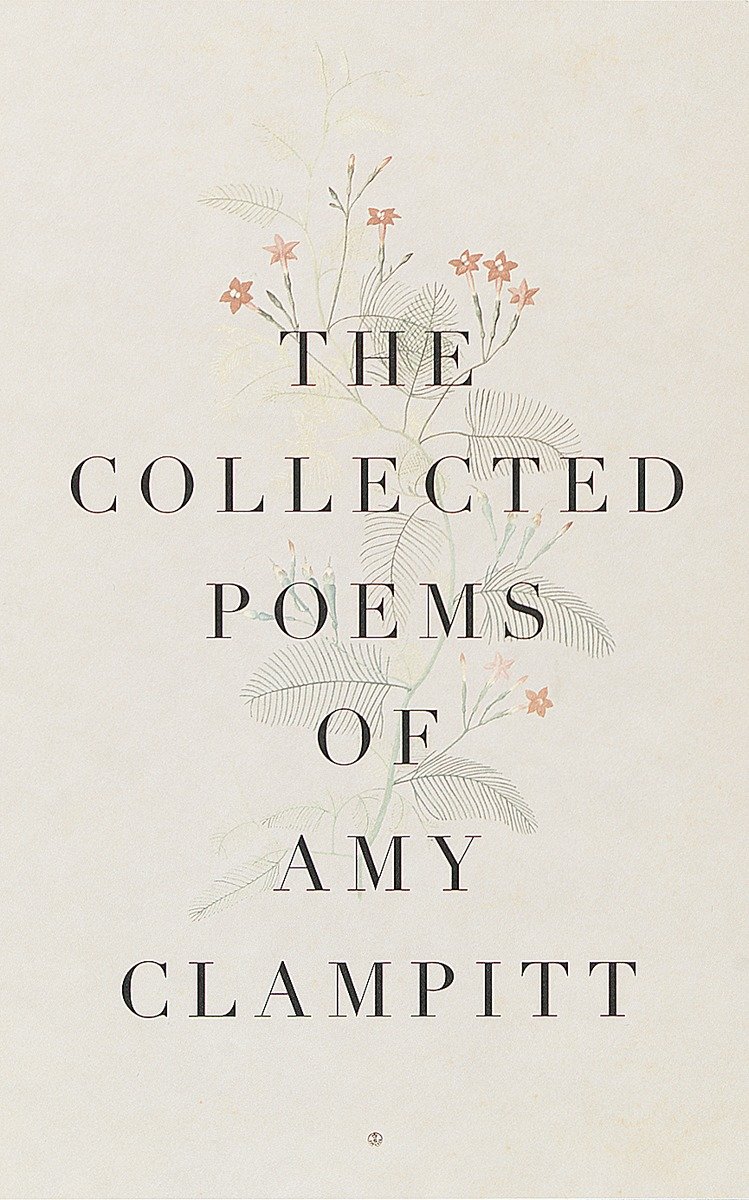The Collected Poems of Amy Clampitt
23.00 JOD
Please allow 2 – 5 weeks for delivery of this item
Description
Now, for the first time, Clammpitt’s five poetry collections are brought together in a single volume, allowing us to experience anew the distinctiveness of her voice: the brilliant language–an appealing mix of formal and everyday expression–that poured out with such passion and was shaped in rhythms and patterns entirely her own. • With a foreword by Mary Jo SalterThe Collected Poems offers us a chance to consider freshly the breadth of Amy Clampitt’s vision and poetic achievement. It is a volume that her many admirers will treasure and that will provide a magnificent introduction for a new generation of readers. When Amy Clampitt’s first book of poems, The Kingfisher, was published in January 1983, the response was jubilant. The poet was sixty-three years old, and there had been no debut like hers in recent memory. “A dance of language,” said May Swenson. “A genius for places,” wrote J. D. McClatchy, and the New York Times Book Review said, “With the publication of her brilliant first book, Clampitt immediately merits consideration as one of the most distinguished contemporary poets.” She went on to publish four more collections in the next eleven years, the last one, A Silence Opens, appearing in the year she died.Amy Clampitt’s themes are the very American ones of place and displacement. She, like her pioneer ancestors, moved frequently, but she wrote with lasting and deep feeling about all sorts of landscapes–the prairies of her Iowa childhood, the fog-wrapped coast of Maine, and places she visited in Europe, from the western isles of Scotland to Italy’s lush countryside. She lived most of her adult life in New York City, and many of her best-known poems, such as “Times Square Water Music” and “Manhattan Elegy,” are set there.She did not hesitate to take on the larger upheavals of the twentieth century–war, Holocaust, exile–and poems like “The Burning Child” and “Sed de Correr” remind us of the dark nightmare lurking in the interstices of our daily existence.It is impossible to speak of Amy Clampitt’s poetry without mentioning her immense, lifelong love of birds and wildflowers, a love that produced some of her most profound images–like the kingfisher’s “burnished plunge, the color / of felicity afire,” which came “glancing like an arrow / through landscapes of untended memory” to remind her of the uninhabitable sorrow of an affair gone wrong; or the sun underfoot among the sundews, “so dazzling / . . . that, looking, / you start to fall upward.”
Additional information
| Weight | 0.72 kg |
|---|---|
| Dimensions | 3.26 × 14.56 × 23.32 cm |
| PubliCanadation City/Country | USA |
| by | |
| Format | Paperback |
| Language | |
| Pages | 496 |
| Publisher | |
| Year Published | 1999-4-20 |
| Imprint | |
| ISBN 10 | 0375700641 |
| About The Author | Amy Clampitt was born and brought up in New Providence, Iowa, graduated from Grinnell College, and from that time on lived mainly in New York City. Her first full-length collection, The Kingfisher, published in 1983, was followed in 1985 by What the Light Was Like, in 1987 by Archaic Figure, and in 1990 by Westward. A Silence Opens, her last book, appeared in 1994.The recipient in 1982 of a Guggenheim Fellowship, and in 1984 of an Academy of American Poets Fellowship, she was made a MacArthur Prize Fellow in 1992. She was a member of the American Academy of Arts and Letters and was a Writer in Residence at the College of William and Mary, Visiting Writer at Amherst College, and Grace Hazard Conkling Visiting Writer at Smith College.She died in September 1994. |
| Excerpt From Book | THE SUN UNDERFOOT AMONG THE SUNDEWSAn ingenuity too astonishingto be quite fortuitous isthis bog full of sundews, sphagnum-lined and shaped like a teacup. A stepdown and you're into it; awilderness swallows you up:ankle-, then knee-, then midriff-to-shoulder-deep in wetfootedunderstory, an overheadspruce-tamarack horizon hintingyou'll never get out of here. But the sunamong the sundews, down there,is so bright, an underfootwebwork of carnivorous rubies,a star-swarm thick as the gnatsthey're set to catch, delectabledouble-faced cockleburs, eachhair-tip a sticky mirrorafire with sunlight, a millionof them and again a million,each mirror a trap set tounhand unbelieving, that eithera First Cause said once, "Let therebe sundews," and there were, or they'vemade their way here unaidedother than by that backhand, round-about refusal to assume responsibilityknown as Natural Selection. But the sununderfoot is so dazzlingdown there among the sundews,there is so much lightin the cup that, looking,you start to fall upward.A HERMIT THRUSHNothing's certain. Crossing, on this longest day,the low-tide-uncovered isthmus, scrambling upthe scree-slope of what at high tidewill be again an island,to where, a decade since well-being stakedthe slender, unpremeditated claim that brings usback, year after year, lugging themakings of another picnic–the cucumber sandwiches, the sea-air-sanctifiedfig newtons–there's no knowing what the slammingseas, the gales of yet another wintermay have done. Still there,the gust-beleaguered single spruce tree,the ant-thronged, root-snelled moss, grassand clover tuffet underneath it,edges frazzled rawbut, like our own prolonged attachment, holding.Whatever moral lesson might commend itself,there's no use drawing one,there's nothing hereto seize on as exemplifying any so-called virtue(holding on despite adversity, perhaps) orany no-more-than-human tendency–stubborn adherence, say,to a wholly wrongheaded tenet. Though tohold on in any case means taking less and lessfor granted, some few things seem nearlycertain, as that the longest daywill come again, will seem to hold its breath,the months-long exhalation of diminishmentagain begin. Last night you woke mefor a look at Jupiter,that vast cinder wheeled unblinkingin a bath of galaxies. Watching, we traveledtoward an apprehension all but impossibleto be held onto–that no point is fixed, that there's no footholdbut roams untethered save by such snells,such sailor's knots, such staysand guy wires as aremainly of our own devising. From such anempyrean, aloof seraphic mentors urge usto look down on all attachment,on any bonding, asin the end untenable. Base as it is, fromyear to year the earth's sore surfacemends and rebinds itself, howeverand as best it can, withthread of cinquefoil, tendril of the magentabeach pea, trammel of bramble; with easings,mulchings, fragrances, the gray-greenbayberry's cool poultice–and what can't finally be mended, the salt airproceeds to buff and rarefy: the lopped carnageof the seaward spruce clump weatherslustrous, to wood-silver.Little is certain, other than the tide thatcircumscribes us, that still sets its termto every picnic–today we stayed too longagain, and got our feet wet–and all attachment may prove at best, perhaps,a broken, a much-mended thing. Watchingthe longest day take cover undera monk's-cowl overcast,with thunder, rain and wind, then waiting,we drop everything to listen as ahermit thrush distills its fragmentary,hesitant, in the endunbroken music. From what source (beyond us, orthe wells within?) such links perceived arrive–diminished sequences so uninsistinglynot even human–there'shardly a vocabulary left to wonder, uncertainas we are of so much in this existence, thisbotched, cumbersome, much-mended,not unsatisfactory thing. |
Only logged in customers who have purchased this product may leave a review.






Reviews
There are no reviews yet.